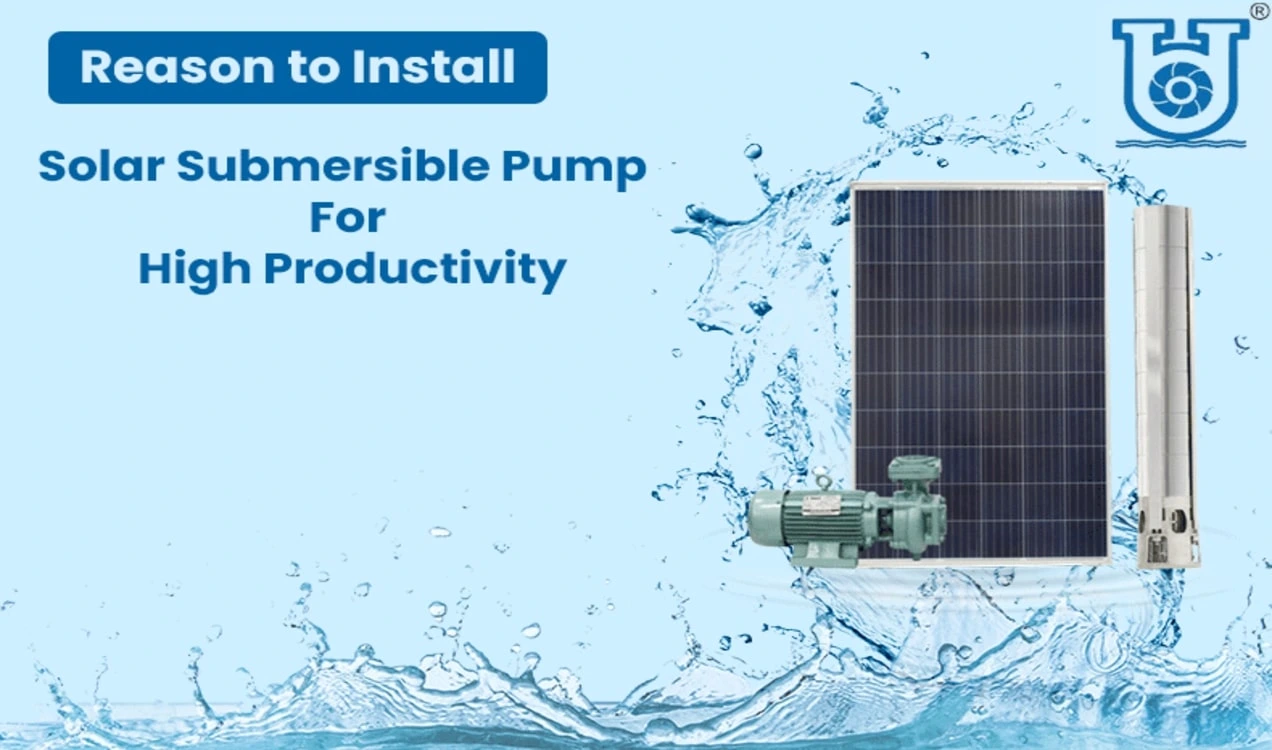In every part of the world, there is a rising concern regarding accessibility to a reliable water supply. Many localities use expensive, oftentimes intimidating maintain diesel-fueled devices to pump groundwater. Solar power can help places where there is a shortage of electricity to receive a regular water supply.
High sun insolation areas are where solar submersible pumps are most viable. A straightforward solar pumping system consists of a solar panel device, a pump, and a power converter. The new solutions are adaptable and can simultaneously function with the electrical grid and backup generator.
Water demand, water storage, depth, placement of PV panels, and solar irradiation are a few of the variables that must be taken into account while building a solar pumping system.
Factors Influencing Solar Submersible Pump Installation
Effortless Installation:
Systems for solar submersible pumps can be deployed quickly and easily. Waterproof connectors are used to connect every solar panel. Again, no soldering is necessary to connect the solar pump, solar panels, and detectors to the controllers using screw connectors. The pump needs to be simple to attach to preexisting electrical and plumbing lines.
Easy to Maintain:
In addition to solar panels, which are incredibly reliable and only need cleaning once a year, solar submersible pumps also have a few more mechanical parts. Because brushless motors lack brushes, they don’t need to be maintained. The field-replaceable pumping mechanisms are very dependable and simple to use. Tens of thousands of liters should be pumped by a system without any maintenance.
Inexpensive Maintenance:
There are two components in solar pumps that may occasionally require extremely inexpensive maintenance. To ensure optimum performance, the solar panels must be cleaned every year for two. The pumping mechanisms should be replaced less frequently, roughly every 5 years, as they might deteriorate over time and lower pumping efficiency.
The System is Modular and Easy to Update:
Systems for solar-powered pumps have a lot of movable parts. As required, they can be reciprocated for and promoted. Additional solar panels may be installed if performance is affected by excessive cloud cover and dim lighting. Batteries and additional solar panels can be installed to enable water pumping during the night if more water is required each day.
Economical than Installing Main Power:
Installing main power to a remote area is time- and money-consuming. Water can be pumped using solar pump devices without an electrical connection. You are no longer restricted by the depth to which a power wire can be buried or by the force of the wind.
Broad Range of Applications:
Solar water pumps are powered by electricity, and photo voltaic-powered pumping equipment. Solar water pumps are using the electricity produced to move water. Solar water pumps can be used for a variety of purposes, including domestic, commercial, agriculture, livestock, and much more.
No Operational Costs:
There are almost no operational and maintenance expenditures after the original system cost, which is frequently contrasted with other attractive solutions. Every time a typical well pumps water, money is lost. Solar submersible pumps, which are powered by the sun, are an exception to this rule.
Solar Pumps are Readily Available:
Solar pumps are now more affordable and widely available thanks to technological advancements in their manufacture. Solar cells and panels are one of the key innovations that have made this possible. The cost of solar cells has decreased significantly due to advancements in manufacturing.
Several localities can receive water from solar pump systems. They can take the place of the typical domestic well pump. These systems’ slightly higher costs are a result of their improved performance as well as their need for more solar panels and greater power requirements.
Highly Efficient and Powerful:
Commercial solar pumps offer great power, minimal maintenance, and efficiency. They have DC motors and are built of stainless steel for long steel. To ensure appropriate cleanliness and long life while submerged in water, stainless steel is used for pumping water in residential and commercial areas. Also, when suspended in water for years, stainless steel doesn’t corrode.
No External Power is Required:
The necessity to provide electrical power to the area makes it difficult to pump water in remote areas. The innovation in solar water pumping is that no external power source is required. All of the electricity required to pump water from hundreds of feet deep is generated by the sun and solar panels.
You can also read this blog: The Various Components of Solar Water Pumps
Final Words:
Installations for solar submersible pumps are adaptable and can be utilized for a variety of purposes. In this blog, we came across ten reasons to install solar submersible pumps for sustainable water supply.
With excellent efficiency, environmental friendliness, and a variety of uses, Unnati Submersible Pumps provides a large selection of solar pumps. Contact us to learn more about our selection of high-performance submersible pumps.


